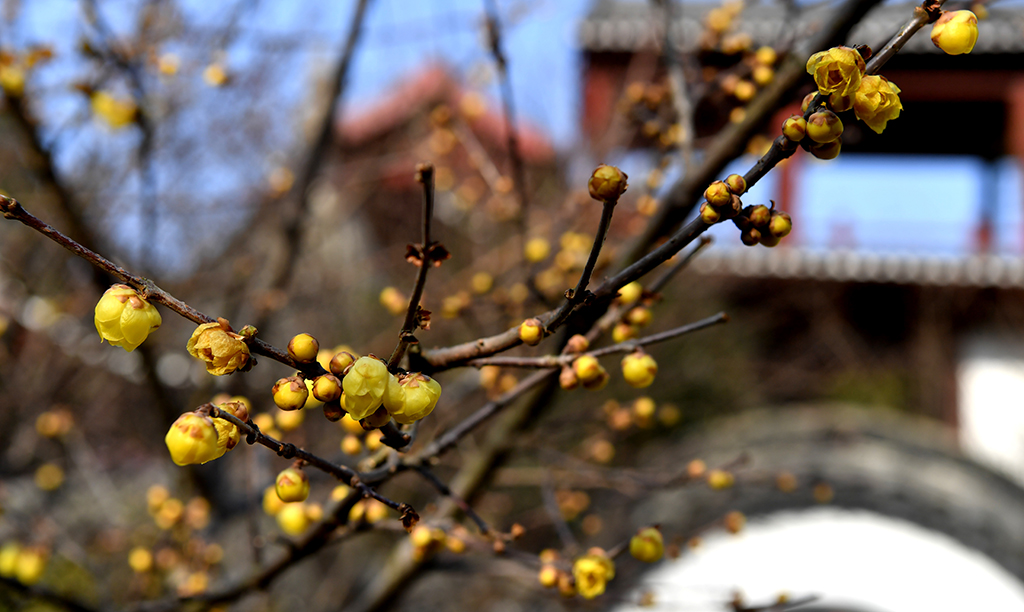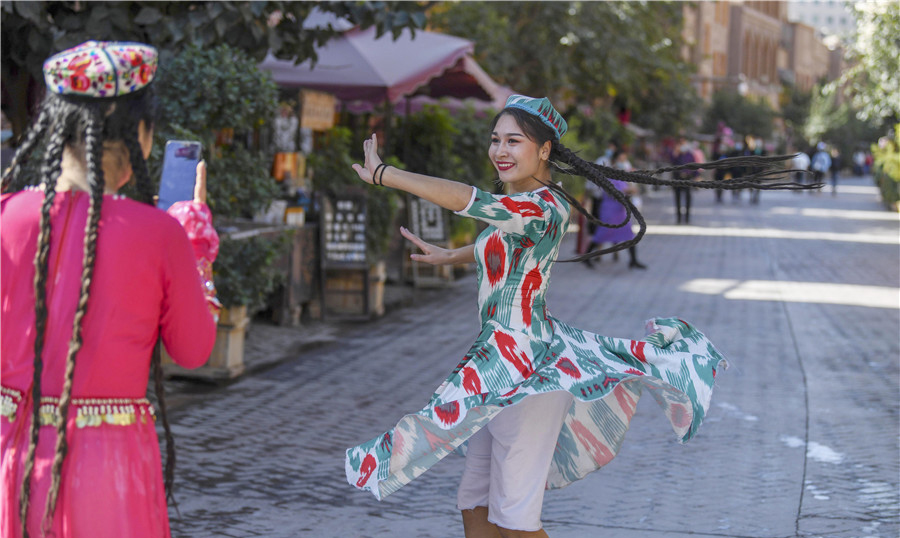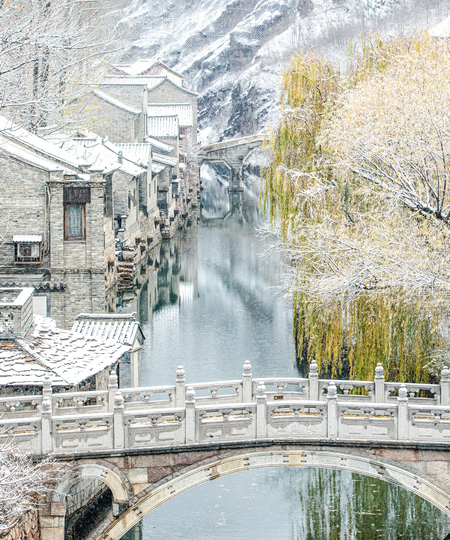Tiny town of museums shows Chinese life in early 20th century
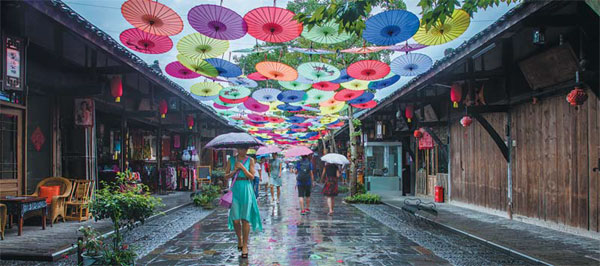
Anren has been named China's only tiny town of museums by the Museums Association of China. Photos Provided to China Daily
WWII plane now housed in Anren, Huang Zhiling in Chengdu reports.
Anren, a tiny town in the west of Southwest China's Sichuan province, made headlines before the Sept 3 military parade in Beijing marking the 70th anniversary of victory in the War of Resistance against Japanese Aggression, because of events relating to the Jianchuan Museum Cluster.
On August 26, Nell Calloway, director of the Chennault Aviation and Military Museum in Monroe, Louisiana, visited the largest private museum in China before leaving for Beijing to observe the military parade.
During her short visit to the museum in Anren, the 65-year-old was happy to see photos of her grandfather Claire Chennault, the late leader of the Flying Tigers, in a hall dedicated to Americans who helped China during WWII.
"I was moved by the Chinese who still remembered what my grandfather and other Americans did for them more than 70 years ago," she said.
Twelve days earlier, the remains of an American transport plane that crashed on the Ruoguo Glacier in Nyingchi, Tibet, during the winter of 1943 had been welcomed to the museum.
The plane, with the serial number 41-24688, went down while flying over the Hump, the name for the eastern end of the Himalayan Mountains. A search team put together by the museum recovered the wreckage .
In September 1993, Luo Song, a local hunter found the plane and the bodies of five American pilots in the glacier 4,100 meters above sea level. Then US president Bill Clinton was present at the ceremony when the bodies were handed over to the United States, but most of the plane was left in the inaccessible glacier in Tibet.
Six years ago, Fan Jian-chuan, curator of the Jianchuan Museum Cluster, learned from a fellow ex-serviceman that the plane was in no-man's land in Tibet.
"I told myself I would bring it to my museum," he said. Organized by his museum and other institutions including Xinhua News Agency, a motorcade of people set out for Tibet on Aug 5.
The team, which included nearly 60 searchers, brought back some 50 pieces of the plane to the museum. It was the first time such a large number of plane remains had been transported to a museum, Fan said.
On July 7, a hall depicting the crimes of the invading Japanese army in chronological order from 1931 to 1945 was opened in the museum.
Since then, more than 1,000 people from across China have visited the hall everyday, according to Liu Ronghua, chief of the general office of the museum.
Museum town
Anren is not only the location of the relatively new Jianchuan Museum Cluster, which opened 10 years ago on the 60th anniversary of the victory in the War of Resistance against Japanese Aggression. Anren, which covers less than 60 square kilometers, also has 27 manors built in the 1930s and 1940s. Each of the manors is also a museum.
Because of its huge number of museums, Anren has been named China's only tiny town of museums by the Museums Association of China. The World Tourism Organization said Anren is the best place for tourists to understand how the Chinese lived in the early 20th century.
At that time, China was torn apart by rival warlords. The Liu family, who came to Anren from East China's Anhui province during the early Qing Dynasty (1644-1911), became very influential throughout Sichuan.
Three army commanders, eight division chiefs, 15 brigade commanders, two Sichuan governors and one commander of the theater were from the family. There were also many low-ranking army officers and government officials in the family.
The Liu extended family built 56 manors in Anren, of which 27 remain.
Local residents refer to Shuren and Yumin Streets in Anren as manor streets as most of the town's manors are located there. Many manors have three or four courtyards and are separated by walls to prevent fire and theft.
Grapefruit and orange osmanthus trees are found in many courtyards because grapefruit has the same Chinese pronunciation as "having sons" and orange osmanthus has the same Chinese pronunciation for "gold" and "precious".
One orange osmanthus tree in the manor of Liu Yuaxuan (1911-96), an army officer from the Liu family, is nearly 100 years old. During Mid-Autumn Festival each year, its fragrance can be smelt throughout Shuren Street.
The manor of Chen Yue-sheng, a quartermaster in the army from the Liu family, is the only Western-style building in Anren.
Visitors to some of the manors can relax or drink tea or stay the night.
Many traditional customs are still kept in Anren.
According to Wang Chang-qing, a resident of the town, some bridegrooms still wear mandarin jackets and lead their brides out of bridal sedan chairs.
"When they enter their bridal chambers, they will bow to heaven and earth and their parents before they bow to each other. Finally, the bridegrooms take off the red cloth which covers the faces of the brides," he said.
In the streets of Anren, visitors can come across traditional smithies and workshops extracting oil.
Old people who have lived all their lives in Anren are used to sitting in front of the wooden doors of their houses on misty mornings, drinking tea, listening to the radio, attending to their flowers or enjoying fermented glutinous rice and rice dumplings.
The tempo of the town is slow and reminds people of olden days.
Contact the writer at huangzhiling@chinadaily.com.cn
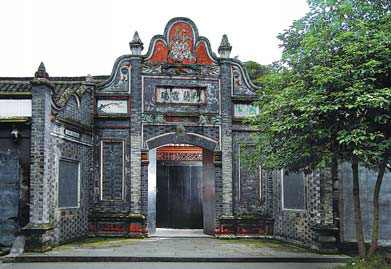
The manor of the Liu family. The Liu extended family built 56 manors in Anren, of which 27 remain.
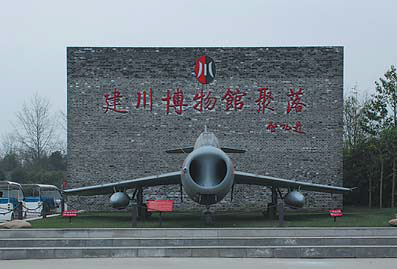
The Jianchuan Museum Cluster, which opened 10 years ago on the 60th anniversary of the victory in the War of Resistance against Japanese Aggression, is the largest private museum in China.
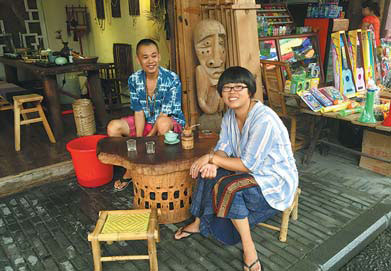
Residents in Anren have leisurely lives. The World Tourism Organization said Anren is the best place for tourists to understand how the Chinese lived in the early 20th century.
(China Daily 09/17/2015 page24)

